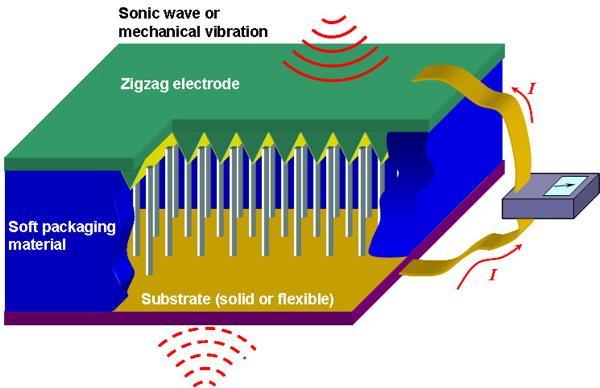Wearable medical devices such as continuous heart rate monitors, insulin pumps and neural stimulators usually need access to an electric power source in order to function. While there’s a great deal of wasted energy that our body emits that can be harvested to power such devices, making it actually happen using biocompatible materials has proven to be challenging. Now, a team of engineers at Purdue University has shown that polyvinyl alcohol (PVA), one of the most common polymers used in biomedicine, can be used to produce efficient triboelectric nanogenerators (TENGs) that can also act as cardiac activity monitors.
“The PVA-based TENGs show great potential for self-powered biomedical devices and open doors to new technologies that use widely deployed biocompatible materials for economically feasible and ecologically friendly production of functional devices in energy, electronics and sensor applications,” said Wenzhuo Wu, the leader of the research team. “We transform PVA, one of the most widely used polymers for biomedical applications, into wearable, self-powered triboelectric devices which can detect the imperceptible degree of skin deformation induced by human pulse and capture the cardiovascular information encoded in the pulse signals with high fidelity.”
The new generators are indeed impressively sensitive, detecting the slight physical movement of the skin with each heart beat and at a high resolution. Moreover, the amount of electricity generated should be sufficient to energize small devices and further advancements may lead to the production of enough energy to even power things such as insulin pumps.
“TENGs with PVA blend contact layers produce fast readout with distinct peaks for blood ejection, blood reflection in the lower body, and blood rejection from the closed aortic valve, which may enable detection of common cardiovascular diseases such as coronary artery disease and ischemic heart disease,” added Wu.
A bit of detail from the study abstract in Advanced Materials: the holistic engineering and systematic characterization of the impact of molecular and ionic fillers on PVA blends’ triboelectric performance is presented for the first time. Triboelectric devices built with optimized PVA‐gelatin composite films exhibit stable and robust triboelectricity outputs. Such wearable devices can detect the imperceptible skin deformation induced by the human pulse and capture the cardiovascular information encoded in the pulse signals with high fidelity.












